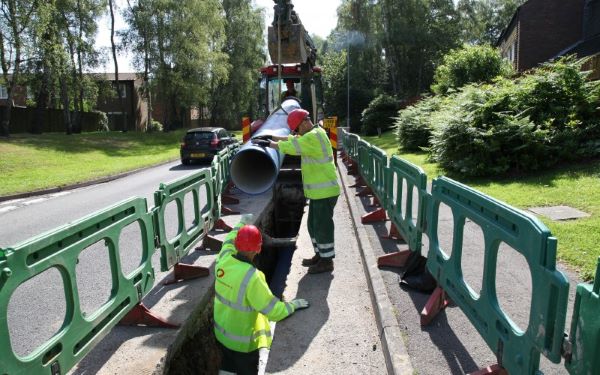The construction sector will need new skills to play its part in decarbonising the UK’s energy infrastructure, says Ronan Clancy.
The war in Ukraine has shone an even brighter spotlight on the future of the UK’s energy mix – accelerating the drive to move away from fossil fuel supply chains and towards renewable sources of power, despite a call from some to extract more of the UK’s own gas resources. Just months after the commitments made at COP26 in Glasgow last autumn, the message from the government’s energy security strategy is that decarbonisation will not only help us to address climate change, but also establish a more resilient grid.
The scale of ambition can’t be underplayed. The strategy’s ambitious plans for 95% of the nation’s electricity to be low carbon by 2030 relies on the construction of up to eight nuclear reactors, expanding offshore wind farms, doubling the capacity of hydrogen production and increasing solar capacity up to fivefold.
The construction sector will be at the heart of delivering these ambitions, not only in developing new energy hubs and transmission infrastructure, but also adapting and refurbishing our current network to support that growth. The scale and urgency of these come as the sector continues to battle market pressures for both material and human resource amidst rising inflation, a particularly buoyant labour market and pent-up investment following the pandemic.
This is a tall order for our industry, and those working in energy infrastructure will need to work hard to attract and train the workforce we need. Effectively communicating the significance of the work our industry does – and its starring role in UK decarbonisation – will be absolutely essential.
Building the right skills
Getting those already working in the sector to act as good ambassadors is the right place to start, especially those working in the field, on the front line of delivery. Technical ability will need to be combined with the constant development of soft skills and behaviours that take into account the communities affected, as well as the environment.
Investing in the right tools is one solution. We’ve had great success over recent years in new construction techniques, such as suction excavation and cured-in-place pipe (CIPP) blue light lining, which speed up project completions while also helping to protect important habitats. That comes down to the workforce planning works carefully and thinking innovatively about how to care for the natural world throughout the build phase.
The success of these new ways of working relies on training, considering the fundamentals of safe working practices, alongside making sure we are productive and sensitive to the local environment. In our own business, we’re continually widening the scope of our work through our Clancy Academy to ensure that our 2,300-strong team are not only technically but also culturally equipped to deliver a decarbonised network.

Communicating change
More resilient networks mean construction works – from substations to cable pipelines – that come with inevitable short-term disruption. It will be down to our industry to engage with impacted communities and communicate the need for change – we need to act as the flagbearers for net zero delivery.
Demonstrating social value is an important part of this puzzle. Whether it’s fostering local skills, recruiting apprentices and strengthening the diversity of our workforce, or improving the resilience of local power provision, an emphasis on the benefits of investment in the energy network can help make the case for change.
Attracting new talent
Regardless of how well the current construction workforce is trained, achieving a low-carbon, more resilient network will depend on the 40,000 new jobs which the government states will be supported by its new strategy. We can’t underestimate the challenge to find and attract those workers – especially given a highly competitive labour market.
Again, part of the solution comes back to demonstrating the social value of infrastructure to partners, communities and prospective employees – and really showing what a career in low-carbon energy can achieve, as well as the benefits it can bring. Given the scale of what is needed between now and 2050, jobs in the low-carbon economy can offer exciting, fulfilling and secure careers.
At Clancy we’ve been investing for the past two years in the expansion of our in-house recruitment hub and specialist programmes to attract new talent across the country, from all walks of life. Through our partnership with the Armed Forces Covenant, for example, firms can benefit from the extensive transferrable skills and experience of veterans, reservists and volunteers from the forces.
Taking the energy network into a low-carbon future is hugely exciting and brings so many opportunities for our industry. We now need to invest in telling that story with enthusiasm and passion if we are to attract, train and retain the teams we need for the job.
Ronan Clancy is executive director at Clancy.

